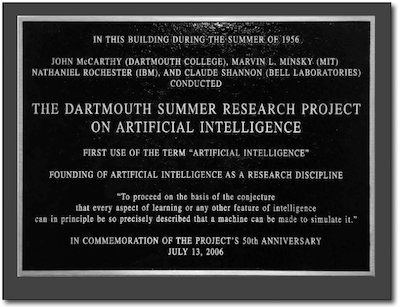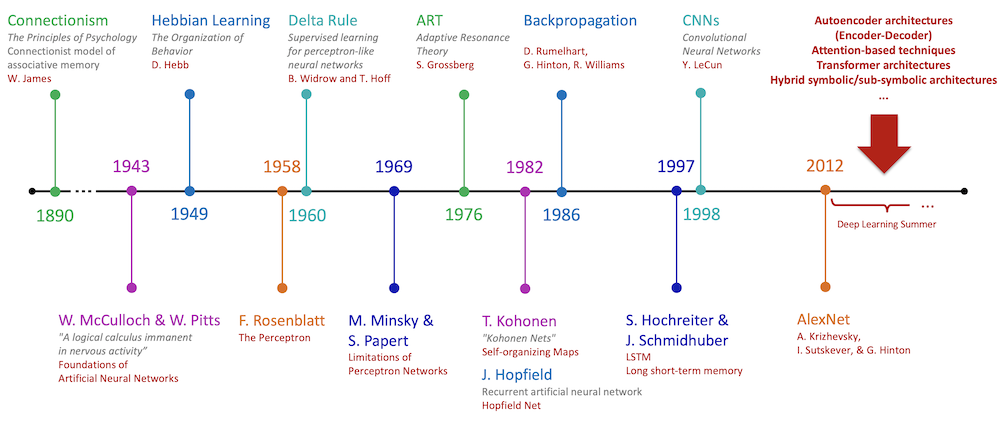

Moor, J. H. (2006). The Dartmouth College Artificial Intelligence Conference: The Next Fifty Years. AI Magazine, 27, 87-91.
This three-unit micro course is part of the Carnegie Mellon University Africa online certificate program in Artificial Intelligence and Machine Learning in Africa.
Course Description | Learning Objectives | Outcomes | Lecture Notes | Recommended Reading |
Course Description
This micro course provides a foundation for other micro courses, presenting a comprehensive introduction to field of artificial intelligence (AI) and the role that machine learning plays in AI. It exposes the technical foundations and the impact that AI and machine learning have had on people's lives as the twin engines that power the fourth industrial revolution. It explains the scope of AI: how it has developed over the past sixty-five years and how it is likely to develop in the future, the way it has been applied in several application sectors, its impact on society, and its relevance to Africa. The micro course requires approximately forty-two hours of study. It comprises fourteen hours of content, i.e., the amount that would normally take fourteen hours to deliver in a classroom setting. Each hour of content is provided in course notes and summarized in a 10-12 minute video presentation. Students will spend the remaining time studying the material covered in the video lecture, encapsulated in the video lecture slides, course notes, and auxiliary reading material, and periodically taking self-check quizzes comprising three to five multiple choice questions. Student progress is assessed by a series of multiple-choice tests.
Learning Objectives
Students will learn about the different components that make up the disciplines of artificial intelligence and machine learning, how they have evolved, where they stand today, and the challenges they face. They will learn about the roots of AI and machine learning in cybernetics, connectionism, and symbolic knowledge-based computationalism and how these approaches have shaped the field today. Students will learn how recent developments in deep learning have revolutionized the field. They will be introduced to modern probabilistic machine learning and inference, and to contemporary approaches to knowledge representation and reasoning. They will explore the many ways that AI and machine learning are being applied in several sectors of the economy, powering the fourth industrial revolution. Students will be exposed to the ethical and social impact of AI and machine learning and the need to democratize these fields. Finally, they will be exposed to the grand challenges facing AI and machine learning and the imperative to make AI and machine learning explainable and trustworthy.
Outcomes
After completing this course, students should be able to:
Lecture Notes
Module 1: What is AI, where did it come from, and where is it taking us?
Module 2:The Nature of AI
Module 3: Example Applications
Module 4: Future Challenges
Lecture 1: AI and The Fourth Industrial Revolution and Notes.
Lecture 2: The Early Years of AI and Notes.
Lecture 3: The End of the AI Winter and Notes.
Lecture 1: Symbolic AI and GOFAI and Notes.
Lecture 2: Connectionist AI: From Perceptrons to Deep Neural Networks and Notes.
Lecture 3: Statistical Machine Learning and Notes.
Lecture 1: AI applications in Medicine and Notes.
Lecture 2: AI applications in Robotics and Notes.
Lecture 3: AI applications for the Web and Social Media and Notes.
Lecture 4: AI applications in Sports and Notes.
Lecture 1: Collaborating with Machines and Robots and Notes.
Lecture 2: Self-learning and Self-programming Machines and Notes.
Lecture 3: Social and Ethical Aspects of AI and Notes.
Lecture 4: Intelligence, Brains, and Consciousness and Notes.

Timeline of the major developments in connectionism & artificial neural networks (from Module 2, Lecture 2: AIML01-02-02).